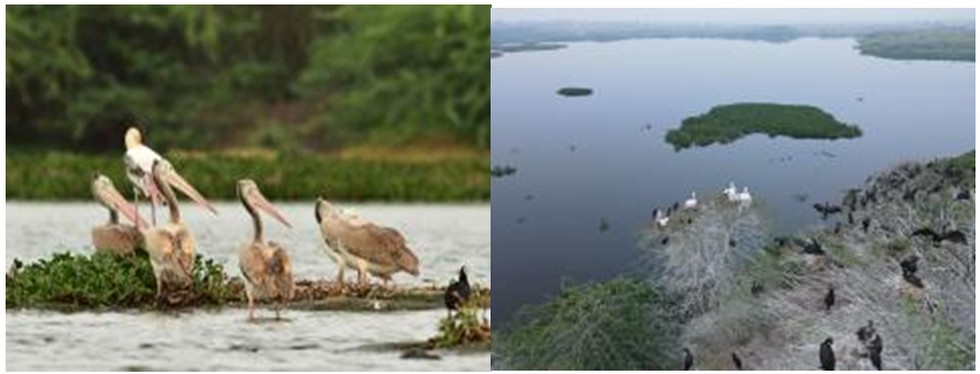On the eve of Independence Day 2024, Union Minister for Environment, Forest and Climate Change, Shri Bhupender Yadav, announced that India has increased its Ramsar sites (Wetlands of International Importance) to 85. This addition comes as three more wetlands have been designated as Ramsar Sites.
Achievement and Recognition
- Increased Ramsar Sites: India’s Ramsar sites count has grown from 82 to 85 with the inclusion of Nanjarayan Bird Sanctuary, Kazhuveli Bird Sanctuary, and Tawa Reservoir.
- Minister’s Remarks: Shri Yadav expressed his happiness regarding this achievement and highlighted it as a reflection of Prime Minister Narendra Modi’s emphasis on environmental harmony and conservation of wetlands, referred to as Amrit Dharohars.
- Congratulations: The Union Minister congratulated Tamil Nadu and Madhya Pradesh for their newly designated Ramsar sites and emphasized the commitment to a “Viksit Bharat” being a “Green Bharat.”
Details of the New Ramsar Sites
- Nanjarayan Bird Sanctuary
- Location: Situated in Tamil Nadu, approximately 10 km north of Tiruppur city, covering 125.865 hectares.
- Significance: Hosts around 191 bird species, 87 butterfly species, and several other fauna. It is crucial for groundwater recharge and agricultural use.
- Historical Context: Named after King Nanjarayan, who restored the lake centuries ago.
- Kazhuveli Bird Sanctuary
- Location: Spanning 5151.6 hectares in Villupuram district, Tamil Nadu.
- Features: A brackish shallow lake with a significant biodiversity, divided into estuarine, creek, and basin areas.
- Ecological Importance: Acts as a critical stopover for migratory birds, a breeding ground for various species, and a major aquifer recharge source.
- Tawa Reservoir
- Location: Located near Itarsi town, Madhya Pradesh, constructed at the confluence of Tawa and Denwa rivers.
- Features: Covers 20,050 hectares with a catchment area of 598,290 hectares. It serves multiple purposes, including irrigation, power generation, and aquaculture.
- Ecological Value: Part of the Satpura Tiger Reserve, supporting diverse aquatic flora and fauna, including rare and endangered species.
Historical Context
India became a signatory to the Ramsar Convention on February 1, 1982. From 1982 to 2013, 26 sites were added. From 2014 to 2024, 59 new wetlands have been included.
Multiple-Choice Questions (MCQs):
- How many Ramsar sites does India have after the recent addition?
- A) 82
- B) 83
- C) 84
- D) 85
- Which states have had wetlands added to the Ramsar sites list?
- A) Tamil Nadu and Karnataka
- B) Tamil Nadu and Madhya Pradesh
- C) Gujarat and Maharashtra
- D) Uttar Pradesh and Punjab
- What is the total area covered by Ramsar sites in India after the recent designation?
- A) 1,358,067.757 hectares
- B) 1,250,000 hectares
- C) 1,400,000 hectares
- D) 1,300,000 hectares
- Which of the following wetlands is located in Tamil Nadu?
- A) Kazhuveli Bird Sanctuary
- B) Tawa Reservoir
- C) Keoladeo National Park
- D) Chilika Lake
- What is the primary function of the Tawa Reservoir?
- A) Recreation
- B) Irrigation
- C) Industrial use
- D) Residential purposes
